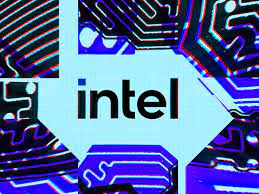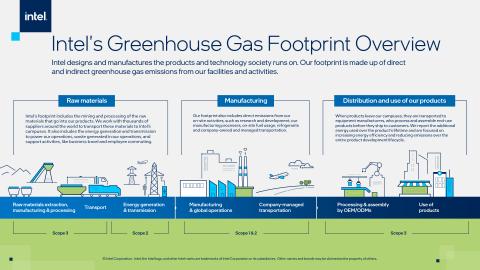Accelerated Innovations for Sustainable, Open HPC
Intel Corporation

Intel meets insatiable computing demand with sustainability as a priority in the next era of supercomputing for all. Intel has an aggressive HPC roadmap planned through 2024 that will deliver a diverse portfolio of heterogeneous architectures. These architectures will allow us to improve performance by orders of magnitude while reducing power demands across both general-purpose and emerging workloads such as AI, encryption and analytics.
As we embark on the exascale era and sprint towards zettascale, the technology industry’s contribution to global carbon emissions is also growing. It has been estimated that by 2030, between 3% and 7%1 of global energy production will be consumed by data centers, with computing infrastructure being a top driver of new electricity use.
This year, Intel committed to achieve net-zero greenhouse gas emissions in our global operations by 2040 and to develop more sustainable technology solutions. Keeping up with the insatiable demands for computing while creating a sustainable future is one of the biggest challenges for high performance computing (HPC). While daunting, it is achievable if we address every part of the HPC compute stack – silicon, software, and systems.
We have an aggressive HPC roadmap planned through 2024 that will deliver a diverse portfolio of heterogeneous architectures. These architectures will allow us to improve performance by orders of magnitude while reducing power demands across both general-purpose and emerging workloads such as AI, encryption and analytics.
The Intel® Xeon® processor code-named Sapphire Rapids with High Bandwidth Memory (HBM) is a great example of how we are leveraging advanced packaging technologies and silicon innovations to bring substantial performance, bandwidth and power-saving improvements for HPC. With up to 64 gigabytes of high-bandwidth HBM2e memory in the package and accelerators integrated into the CPU, we’re able to unleash memory bandwidth-bound workloads while delivering significant performance improvements across key HPC use cases.
When comparing 3rd Gen Intel® Xeon® Scalable processors to the upcomingSapphire Rapids HBM processors, we are seeing two- to three-times performance increases across weather research, energy, manufacturing and physics workloads2. At the keynote, Ansys CTO Prith Banerjee also shows that Sapphire Rapids HBM delivers up to 2x performance increase on real-world workloads from Ansys Fluent and ParSeNet3.
Compute density is another imperative as we push for orders of magnitude performance gains across HPC and AI supercomputing workloads. Our first flagship Intel data center graphics processing unit (GPU), code-named Ponte Vecchio, is already outperforming competition for complex financial services applications and AI inference and training workloads. We also show that Ponte Vecchio is accelerating high-fidelity simulation by 2x with OpenMC4.
We are not stopping here. Today we are announcing our successor to this powerhouse data center GPU, code-named Rialto Bridge. By evolving the Ponte Vecchio architecture and combining enhanced tiles with next process node technology, Rialto Bridge will offer significantly increased density, performance and efficiency, while providing software consistency.
As the data center and HPC workloads increasingly move toward disaggregated architectures and heterogeneous computing, we will need tools that can help us effectively manage these complex and diverse computing environments.
Today, we are introducing Intel® XPU Manager, an open-source solution for monitoring and managing Intel data center GPUs locally and remotely. It was designed to simplify administration, to maximize reliability and uptime by running comprehensive diagnostics, to improve utilization and to perform firmware updates.
A Distributed Asynchronous Object Storage (DAOS) file system provides system-level optimizations for the power-hunger tasks of moving and storing data. DAOS has an enormous impact on file system performance, both improving overall access time and reducing the capacity required for storage to reduce data center footprints and increase energy efficiency. In I/O 500 results relative to Lustre, DAOS achieved a 70x increase6 in hard write file system performance.
We are proud to be partnering with like-minded customers and leading research institutions around the world to achieve a more sustainable and open HPC. Recent examples include our partnership with the Barcelona Supercomputing Center to set up a pioneering RISC-V zettascale lab, and our continued collaboration with the University of Cambridge and Dell to evolve the current Exascale Lab into the new Cambridge Zettascale Lab. These efforts build on our plans to create a robust EU innovation ecosystem for the future of compute.
The bottom line is no single company can do it alone. The entire ecosystem needs to equally lean in, across manufacturing, silicon, interconnect, software and systems. By doing this together, we can turn one of the biggest HPC challenges of the century into the opportunity of the century – and change the world for future generations.
Source: Intel newsroom





